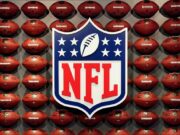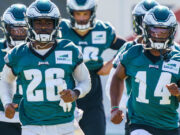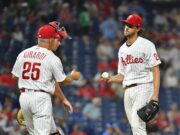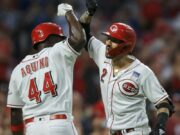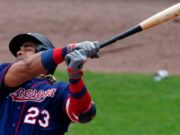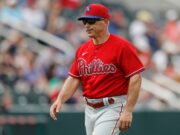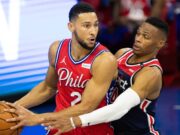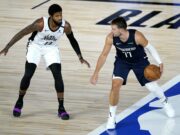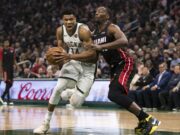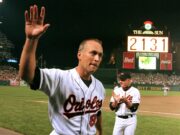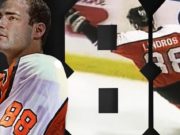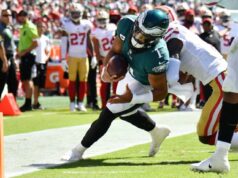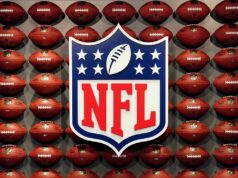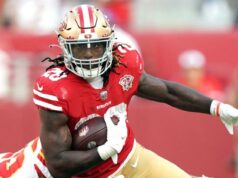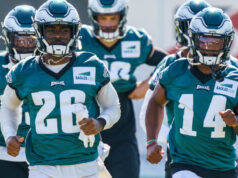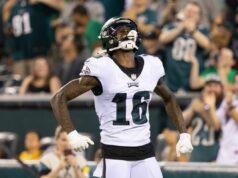Since 1990, there have been thirteen times that a team has followed the feel-good narrative of worst-to-first. The Arizona Diamondbacks hold the distinction of being the only team able to boast that they’ve done so multiple times (three to be exact). The Boston Red Sox sprinted from 69-93 record in 2012 (thanks, Bobby Valentine) to a 97-65 record in 2013 and a World Series title, feeding off the raw emotions of their hometown following the Boston Marathon bombing. The 1991 World Series featured two teams that had finished dead last in their divisions the previous season: the Minnesota Twins and the Atlanta Braves. These feel-good stories happen and they’re awesome when they do.
We aren’t here to talk about those types of stories, though. No, we’re here to talk about the inverse of those happy endings. We’re here to talk about the tragic downfall, the dreaded collapse from first to worst. Over that same timeframe, from 1990, only five teams have had the distinction (in-distinction?) of plummeting down the standings to the cellar: the 1993 Oakland A’s, the 1995 Montreal Expos, the 2011 Minnesota Twins, the 2013 Boston Red Sox, and the 2015 Detroit Tigers. The fact that the 2021 Minnesota Twins will likely join the ranks of those to go from first to worst isn’t in question. The real question is why.
Historical Precedent
There are a variety of factors that come into play when we look at why good teams suddenly break bad. The 1993 A’s were reeling from the departure of Jose Canseco (felt weird typing that) as well as a season-ending injury to Mark McGwire. The ’95 Expos watched their bullpen crumple in the absence of John Wetteland (#scumbag) and their starting rotation falters absent ace Ken Hill. The 2011 Twins struggled when players like Delmon Young and Jason Kubel didn’t produce as they did in 2010. The ’14 Red Sox reverted to form likewise with the regression of Mike Napoli, Jonny Gomes, and Mike Carp. The ’15 Tigers, well, a lot went wrong there and has continued to go wrong since.
The difference between division best and worst sometimes comes down to one or two lucky (or unlucky) breaks. An injury to a star player, the departure of a key contributor, regression from role players or veterans, lack of talent coming out of a farm system: they all play into a team’s struggles which brings me to my point about this year’s iteration of the Minnesota Twins.
Fundamentally Flawed
At their core, the 2021 Minnesota Twins just aren’t a very good baseball team. Relatively small sample size aside (though, we are now a third of the way done with the season), the flaws in this team’s armor are aplenty. Offensively, the Twins have long made their hay on launching home runs and abandoning small ball strategies. They’ve continued to do so in 2021, ranking second in the league in home runs and fourth in slugger percentage. Still, isn’t their value in having multi-tooled players who can run the bases well, hit for average, lay down bunts, and do all of those other things absent from the games of power hitters like Miguel Sano? The one-dimensional nature of their offense necessitates them to hit solo homerun after solo homerun in order to keep pace with their opponents.
How about their fielding? I mean, didn’t they add Gold Glove patentor, Andrelton Simmons, in the offseason?
The Minnesota Twins committed the least amount of errors in baseball last season (20).
They just added a 4x Gold Glover with a career 26.6 dWAR in Andrelton Simmons. pic.twitter.com/mPWrHD7oil
— Danny Vietti (@DannyVietti) January 27, 2021
Yeah…about that. In 2021, Minnesota Twins’ defense has been remarkably frustrating. The aforementioned Simmons has been…average thus far (surprising given his track record of success). Furthermore, his addition misplaced both Jorge Polanco and Luis Arraez. Players playing out of position can be a major problem (looking at the left field Rhys Hoskins experiment in 2018). Here’s an example of the jarring effect this shift in infield alignment has on the team:
Did a video on the A’s extra innings win over the Minnesota Twins due to the Twins’ fielding errors.https://t.co/rQW7UJqxGD
— Aaron (@AbbottsTake) April 22, 2021
Perhaps most damning is the team’s pitching: with three starters posting ERAs over 5.00 and a cumulative bullpen ERA of 4.77, it’s hard to win when your struggling offense and a clumsy defense is buoyed by an inept pitching staff. The sudden ineffectiveness of Kenta Maeda is shocking. Is he as good as he was in 2020 (6-1, 2.70 ERA, 0.750 WHIP, 80:10 K-to-BB ratio)? Probably not; those numbers are all well above his career mark. You would think he’d be a hell of a lot better than what he’s been in 2021, though. 11.0 hits allowed per 9 innings pitched, including 1.9 homeruns per game, are not what the doctor ordered.
New post: The #mntwins were 8-3 in Kenta Maeda’s starts last season. They’re just 2-6 when he pitches this year, and he’s given up a lot of leads. I examined his struggles here:https://t.co/0p09g7poBw
Podcast:https://t.co/dqyZEQwQZY pic.twitter.com/qOss9OSW5S
— RandBall (@RandBall) May 17, 2021
Prognosis For Minnesota Twins Fans
It’s difficult to give up early on your team. Currently, the Minnesota Twins have a 7.7% chance to make the postseason (a far cry from their 63.3% preseason odds). It’s tough to see a path for this team to take to get back to league wide relevance, however. Leapfrogging the Cleveland Indians and Chicago White Sox in the standings would take a litany of lucky breaks. There really isn’t any point in discussing the Wild Card with the majority of the AL East and whoever doesn’t emerge victorious in the AL West all well ahead of the Twins in that department. With Byron Buxton and Max Kepler still out to injury, things will most likely get worse before they get better.
The dog days of summer are fast approaching. My feeling is that Minnesota Twins fans should get settled in for a bumpy back half of the season out in Minneapolis. This team has all of the ingredients for continued struggles. The fall from first to worst is already underway and, at this point, I’m just curious to see how much uglier things will get.


